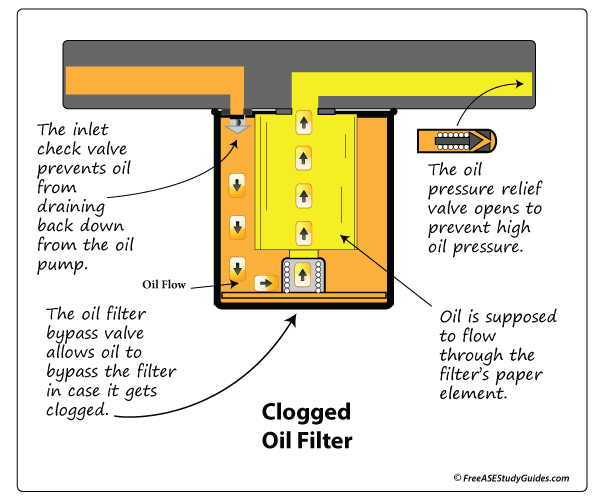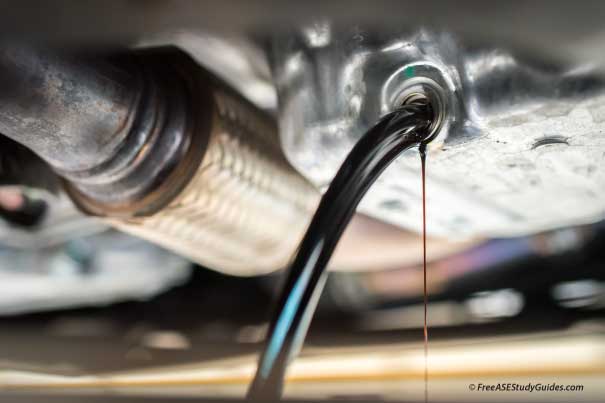Clogged Oil Filter

The oil pressure relief valve opens to prevent high oil pressure in the engine. The oil pump creates oil pressure that forces the oil to flow to the oil filter. Inside the average oil filter are the inlet check valve and the bypass valve. The inlet check valve prevents oil from draining from the pump when the engine is shut down. The bypass valve is used in case the filter gets clogged. The valve opens, allowing the oil to bypass the filter element and run straight to the engine. Oil flows from outside the filter, through the element, and then through the middle before re-entering the engine.

The oil pressure relief valve is tasked with preventing excessive oil pressure from developing in the engine. The valve typically contains a spring that allows just enough oil to bypass the system and return to the oil pan. If the valve is stuck closed, engine oil pressure rises, resulting in high pressure and a swollen or ballooned oil filter.
Be careful when removing an oil pressure relief valve; note the direction of the valve in the pump housing or block, and visually inspect the valve for scoring. Installing the valve backward may result in no oil pressure at all. An oil pressure gauge reads and aids diagnoses any oil pressure problems.

Contaminated oil could clog the oil filter and result in a catastrophe. The oil filter bypass valve opens to prevent engine damage in case of a clogged oil filter. If the valve remains closed, the clogged filter will balloon and may cause severe engine damage. A stuck open oil bypass valve will allow the pressurized oil to bypass the filter and flow back through the system.